--24v and 538 Buick Roadmaster (1954-1960) (cont...)
I wonder if - by leaving these protruding 1952 fins at the rear out, or simply reducing, generalizing them - Meccano deliberately managed to avoid an extra complexity for the rear part of the die ...
Perhaps Jacques' technical expertise can be of help explaining this. Kind regards, Jan
Jan,
I think that the guy who made the drawings for this Buick mixed the 1951 and 52 models or even did not notice that there were different. Once the 1952 chrome parts had been added to the rear wings in the mould, they could not be removed to come back to the 1951 model. I must admit that although jan's O post is excellent as usual, I can not spot the differences between the two years on the front of the car.
My guess would be that the DInky Toy was originally designed as a 1951 model, and then the extensions were added to the rear wings in an attempt to update the toy. (And of course at that point it was impossible to delete the sweepspear from the sides.)
One should remember that in those days the cosmetic changes that were applied to American cars every year were pretty drastic, and also the subject of pre-release secrecy. It was very difficult for Meccano Ltd. to keep up with them, and would have been even if they had had advance access to automotive designs (which I believe was rarely, if ever, the case with U.S. automakers).
Another example, off the top of my head, would be Liverpool's model of a Ford Fairlane. This is a model of a 1961 Fairlane, which would actually have gone on the market in the U.S. in September 1960. Yet Binns Road could not release it until January 1962 -- 16 months later.
This kind of gestation period was much more extended than, for example, that enjoyed by the U.S. makers of plastic kits, such as AMT and Jo-Han. They were able to release their versions of new cars from Ford, Chevy, Buick, et al while these were still current models.
Inevitably, then, Dinky Toys (and to a lesser degree Matchbox and Corgi) always seemed a bit "dated" from the spoilt American child's point of view. Not a criticism, of course, just a comment!
Jacques-indeed there are no casting changes to spot in the body of the front of the 1951 and 1952 Buicks. But I found subtle differences in the grille and bumper rosettes as I described and show in the pictures of the brochures and the real Buicks 1951 and 1952.
It seems to me an American tradition in those days to change at least the grille every year. At first view the grilles look perhaps similar, but at closer look there are differences. If you count the number of vertical ribs of the 2 grilles you know the difference.
I am attaching 2 more photos of a 1951 and 1952 Buick Roadmaster to show the difference in the grilles and bumper rosettes. What always remains a question is whether original bumpers and grilles are mounted back during restorations.
Note: The photos show the perfect beauty of this legendary American car.
Jan Oldenhuis, 17 June 2021
Dear Jan,
I was not aware that the number of ribs in the front grill was different for the 1951 and 52 models.
1) The 1951 issue has 25 ribs, the 1952 one has only 19 of these ribs just like the Dinky Model. I do not think that the tool makers could have made the Dinky with 25 ribs.
2) The over riders on each side of the front number plate of the 51 model are smaller than in 52. The 24v sports the small1951 ones.
3) The long chrome plated flashes on each side of the Dinky are as on the 1951 Buick.
4) The rear wings of the Dinky are of the1952 type.
5) The emblem on the Dinky's boot lid is of the 1952 type.
All this makes the Dinky mainly a 1952 model.
Have you spoted any more differences between both manufacture years ?
Kind regards.
Jacques
Jacques-thanks for your confirmation and listing the differences.
Your summary is missing the high position of the boot/trunk handle which is the same as model 1952.
I think that so far the main differences between the 1951 and 1952 model have been mentioned.
Kind regards, Jan O.
Jan,
Thank you for your comment, I have added the boot lid to the list.
I think we have now pretty well defined this great model, and now know for the first time, just what it is comprised of. Thanks to all of you for finishing my initial observations several years ago with these new thoughts. Another very interesting story about a Dinky Toys model, that, as usual, is somewhat surrounded in mystery as to how it came about. These little observations are also part of what makes our hobby so interesting and new discoveries are indeed still being made, all these years later!
Best regards, Terry
Jacques---One last question for you regarding the 24v Buick Roadmaster. As Jan showed, some of these models were completed with the silver side trim not being painted. I have seen evidence of this several times over the years, so I know it is not just an isolated case......it happened to quite a few models. I don't remember hearing about a similar omission before, and I am somewhat perplexed that French Meccano would allow it to happen. My thought is something happened to the special mask used for that detailing, and apparently the factory made a decision to produce the model anyway. Curious what your thoughts are on this.
Best regards, Terry
Hi Terry
There can be several reasons for those missing mouldings on the Buick's sides but we will never know exactly. I am not like those highly educated so called experts who mistake "no doubt" and "probably" and when they think about something it must become the rule. For example the chrome plated hubs which have never been fitted to the Dinky, the cross hatching for reinforcement etc.... There are still masses of things which we do not know about Dinky and we will never know because most of the people involved are gone for ever.
The reasons may be :
1) the girl who sprayed the silver mouldings was not fast enough and every few models one was not sprayed
2) while she re filled her spay gun some models were not painted
3) while she cleaned the mask some models were not painted
4) the poor girl had to go to the loo sometimes
5) she was late after the cofee break
6) she had a cold and spent a lot of time blowing her nose.
7) there may have been an unknown technical reason
8) the girl was a dam unionist
9) any other reason you can think of ..............
All the best.
Jacques
I found this photo with text about mask spraying on Planet Diecast.
I have respect for the ladies who had to do this precise job day in and day out without the necessary respiratory protection. Each Dinky model required its own specific masks for the detailing and model 24v required I think a minimum of 5 different masks.
I am not a specialist, but it seems that the mask plate is secured between clips so that it can be exchanged for a different mask each time. This job was done in several places side by side. For example, did the model have to dry after each mask spraying before the next mask spraying could be performed? That takes a lot of time per model. I hope Jacques can say something about the technique and process of mask spraying.
As mentioned, the 24V model had to undergo at least 5 mask operations. 1. The front grille, bumper and headlights. 2. The rear bumper and trunk handle. 3. The left side decorative strips with 4 portholes. 4. The right side decorative strips with 4 portholes and 5. Different color on the roof. Also red tail lights and a red dot on the hood ornament had to be applied by hand.
Model 24v was therefore laborious and required the necessary accuracy and skill to apply the paint completely opaque to the various details. The result has become one of the most beautiful Dinky Toys cars.
We know that there are 24v models that left the factory without the side detailing for whatever reason. Unfortunately, we have to regard this as a factory error.
Below a photo of my 24v Buick Roadmaster with silver sprayed side details as we would like to see them on each side of any 24v model. Also a beauty to see is the red painted hood ornament of the 24v.
Jan Oldenhuis, 21 June 2021
Jan--I have long wondered and pondered about just how the masking was actually done, and also exactly what were the masks made of. One most Dinky models, the masking is done somewhat perfectly, with even coverage, and very tight, crisps lines, where the masking ends. Also, very importantly, there is normally no sign of overspray, which would happen if the mask did not fit very tightly. So I wonder just what these masks were made of....was it some type of synthetic material, that had a tiny amount of "give" in it, so it could perfectly conform to the shape of the model to which it was applied? For some reason, I cannot fathom it being a hard material. On a very few of my Dinky's, there is light overspray, indicating to me that the mask was somehow not securely fastened or in place.
Another amazing item, particularly with our Buick Roadmaster, is just how fine some of the masked areas are.....quite tiny. Maybe the best example I have noticed, that is just superb, is the rear boot or trunk handle on the Buick. I have posted a photo below of my blue, dark blue, very early one, and just look how thin that horizontal silver strip is......just incredible, and impossible to do by brush I would think.
Wouldn't any of us give a small fortune to be amazingly transported back in time, to just a day at the factory, closely observing all of these long ago techniques that were not well documented , or samples of a mask saved!
Terry - thanks for your response. I had exactly the same questions as you, which unfortunately we can no longer answer conclusively.
Jan O.
Jan,
The Encyclopaedia contains several photos about the mask spraying for the Dinky.
On the home page's right hand menu there is a link to "MECCANO FACTORIES". Chose "Meccano s.a. Avenue Henri Barbusse" and "Meccano Ltd. Binns road". Both these links contain photos of the static and hand held sparying masks.
The girls did not need any protection against the paint as all the spraying stations were fitted with a ventilation system. The photos show the big pipes leading to the roof.
For the Buick there were probably only two masks : one fot the second colour of the roof and one for all the silver details
Even with the extractor system in operation, there would probably still be some overspray in the atmosphere, and in earlier times the paint would have contained lead. This arrangement would certainly not be tolerated today.
Kevin,
You are right, it would probably not be tolerated in Europe today but what about China and all the third world countries were our factories have gone ? Are'nt we overdoing things in Europe and raising prices at the same time ? Too many standards are killing (should I have written have killed ?) our industry ?
I have shown these boxes before, but thought it might be good to post them again, with all the recent interest in the Buick Roadmaster. The very early versions of the box are different: The illustration of the model has a "shadow" on only the early version, plus the early ones contain the word "Miniatures" on both the front of the box, as well as the ends.
Terry
There is a third box to look for.
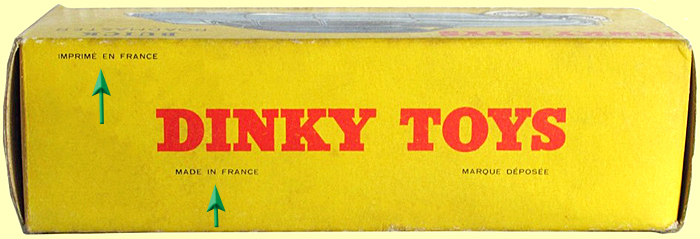
it is printed with : "IMPRIMÉ EN FRANCE" and "MADE IN FRANCE".
Photo by courtesy of RichardHennequin.
Yes, and I guess that type 2 is as scarce as 24U aronde's 2nd type box...
For me 2 very nice acquisitions. For the colour variation I acquired this 24v in light blue body with cream roof that I could buy in France. It has the full silver mask painted chrome detailing (sweep spear) on the sides and has the 3rd type box as shown above by Jacques. The inner roof is cross hatched.
After Terry's comment in #4 in 2015 about the exclusive 24v “shadow” box with the inscription Miniatures Dinky Toys I started looking for it to acquire such a box, but it didn't show up for me. However, recently I saw a beautiful 24v with yellow body and green roof, together with a pristine "shadow" box marked “Miniatures Dinky Toys” for sale in France. It is the 1st type with smooth inner roof. After such a long search I couldn't pass up the opportunity to buy this 24v with this “shadow” box in perfect condition and I am very happy with it. It completed my main versions: 2 versions with smooth inner roof and 2 versions with cross hatched inner roof, including all 3 box types. All four cars have different shades of colour.
There are many French boxes to find with a shadow below the model pictured, but as far as I could find is this 24v “shadow” box really the only French DT box with the inscription “Miniatures” above the name Dinky Toys, so this box is very unique.
In Roulet and Gérard Dulin documentation I could not find another French box with inscription “Miniatures Dinky Toys”. Some Atlas editions reproduced this 24v box with shadow, but always without inscription Miniatures Dinky Toys.
This 1st type 24v box is very scarce and hard to find in any condition and certainly hard to find in pristine condition with all end flaps present as mine.
The French catalogues from 1950 to 1953 and 1956 also use the inscription “Miniatures Dinky Toys” on the front cover and this name is also used in many French leaflets.
Below I show a very nice picture of the 24v introduction in the French Meccano catalogue of 1953 with all silver mouldings, including the silver window mouldings and silver raised fins on the rear fenders, which are never silver painted on the real DT model. However, the picture on the box fits the model perfectly.
Jan Oldenhuis, 20 July 2021
Jan
Two very nice new acquisitions to your expanding Buick Roadmaster fleet! Such a lovely model deserves attention, and the more, the merrier. I wanted to point out that I have found two other examples of French Dinky Toys yellow boxes with the words "miniatures" printed on it. One is the 24U Simca Aronde (not sure if it has the shadow illustration, as the photo I have doesn't show that view, but it isn't mentioned); the other is the 49D Esso Petrol Pumps. It also has the "miniatures" wording, but no shadow. I have that one, and the box is like new, but do not have a photo of it yet. I will take one very soon and post it. I am quite sure only very early versions of these boxes have that wording. I looked through the very good "Miniatures Dinky Toys serie 24 Francaise", by Redempt and Wagner and did not see any other references there.
By the way, I am assuming you realize that your early yellow version should also have plain Zamac wheels....not polished.
Best regards, Terry
Jan--Here are a couple of photo of my 49D Esso Petrol Pumps box, showing it also with the iconic wording "miniatures". I looked on line for other photos of 49D boxes, but did not see any others with this wording, so like the Buick box, am assuming this is either somewhat rare, or at least, uncommon. I am guessing that these boxes must date from 1954 or so, and likely only that year or part of it. I was very lucky with this box....it is still quite crisp and almost like new....must have spent its life in storage!
Best regards, Terry
Jan's green over yellow model is a first type variant with raw hubs and uncross hatched inner roof :) later versions were fitted with nickel plated (or chrome) hubs, not polished.
There is another box with "Miniatures", it's the 25B Peugeot D3A Mazda
Erwan--I used to call them plated too, until Jacques kept insisting they were not plated, so whichever I call them, I am wrong.....
Best regards, Terry
There were only four boxes printed with "MINIATURES" and the Buick's is the only one with a dark shadow under the model.
24 u - Simca Aronde issued 06 1953
24 v - Buick Roadmaster issued 01 1954
25 bj - Mazda van issued 10 1953
49 d - Petrol pumps issued 01 1954 model subcontracted to P.R.
The boxes of models issued after these had a light or very light shadow under the drawing.
The box for the Simca Aronde was the first French yellow box issued by Meccano s.a. All these "MINIATURE" boxes are rare, they were provided with the first batch to live the factory only.
The hubs for the Buick and a few other models were first diecast and painted, next they were still diecast but not painted then came the spun soft steel hubs which were not plated certainly for cost reasons. Chrome or nickel plating have a matt finish and need to be polished which is possible but very unlikely. The evidences which proves that those hubs are not plated is that they rust and also that the plating would hide the very thin circular tool marks and reduce the ridge let away a price multiplied by probably three.
The plated hubs come from Roulet's books and many people including the best known auction houses repeat this and other errors. All along his books, Roulet shows his great lack of technical knowledge, he was a civil servant and did not work in factories or design offices.
Very nice research on the French Miniatures Dinky Toys boxes by everyone. Many thanks for that.
I just checked it out in Jacques his DT encyclopedia. Of all 4 boxes with lettering Miniatures Dinky Toys mentioned by Jacques above, the 24v box is the only box with a shadow under the model. I am attaching 2 photos of the boxes not yet shown from the Dinky Toys encyclopedia of Jacques Dujardin, with permission from Jacques.
Because so few of them have been issued makes them rare. I am very happy with Jacques conclusion above that the 24v box is the only box with a dark shadow under the model together with the lettering Miniatures Dinky Toys. This makes this box very unique in his sort.
Jan Oldenhuis, 20 July 2021.
Jan---I agree completely.....nice to have that special and unique box with such a nice model as the Roadmaster. We were both fortunate to find that early one!
Terry
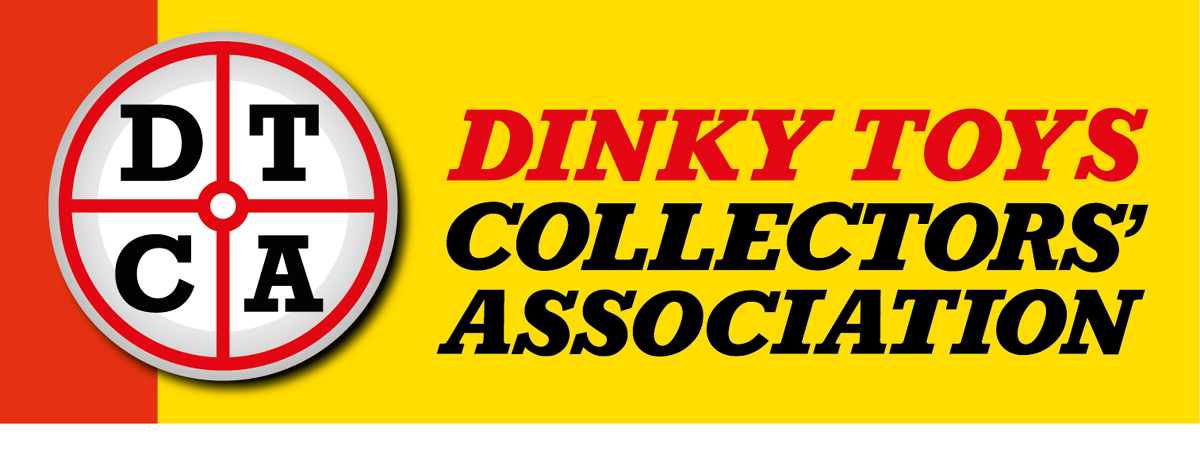

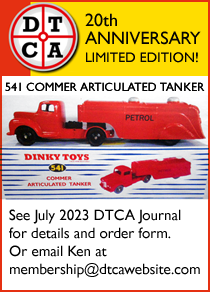
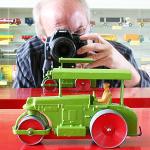
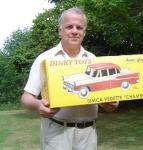


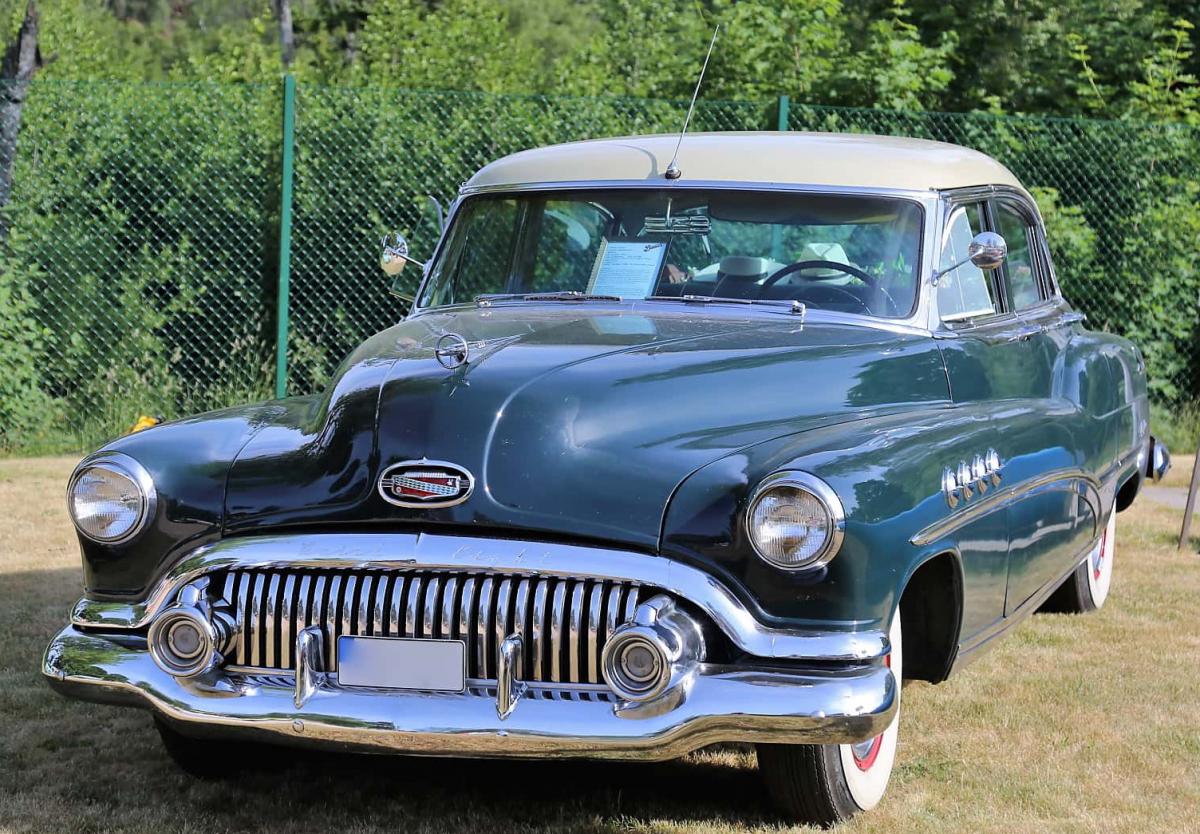
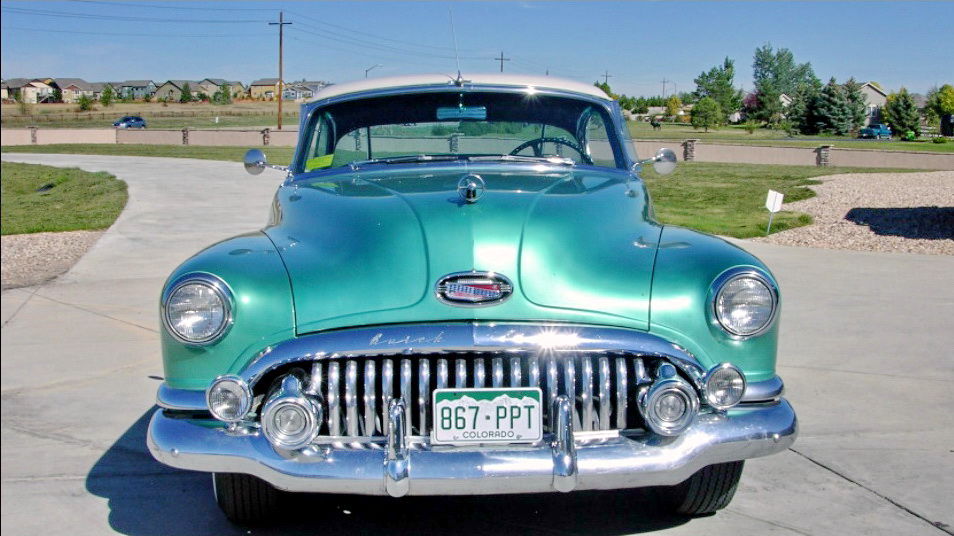
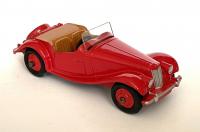
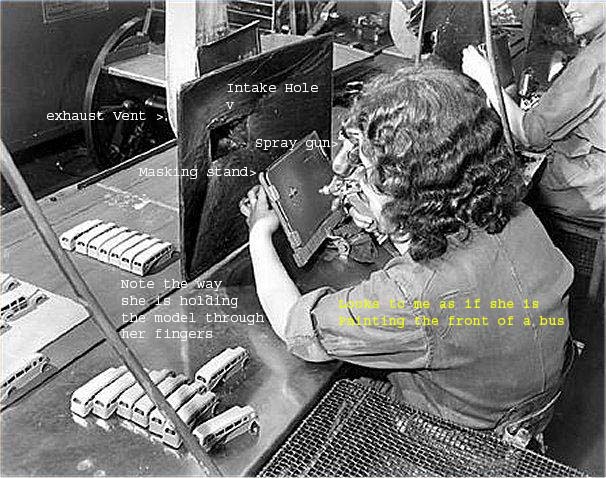
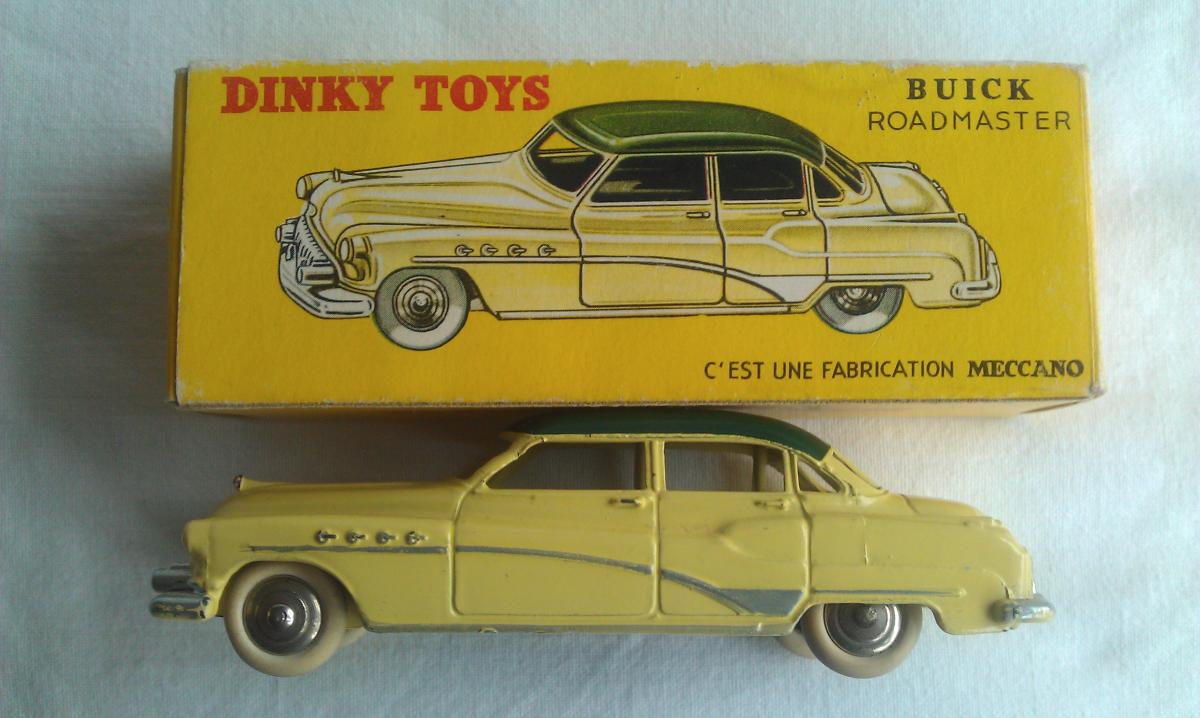
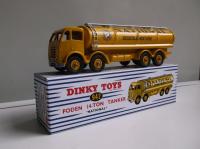
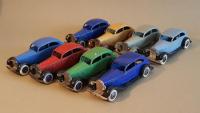
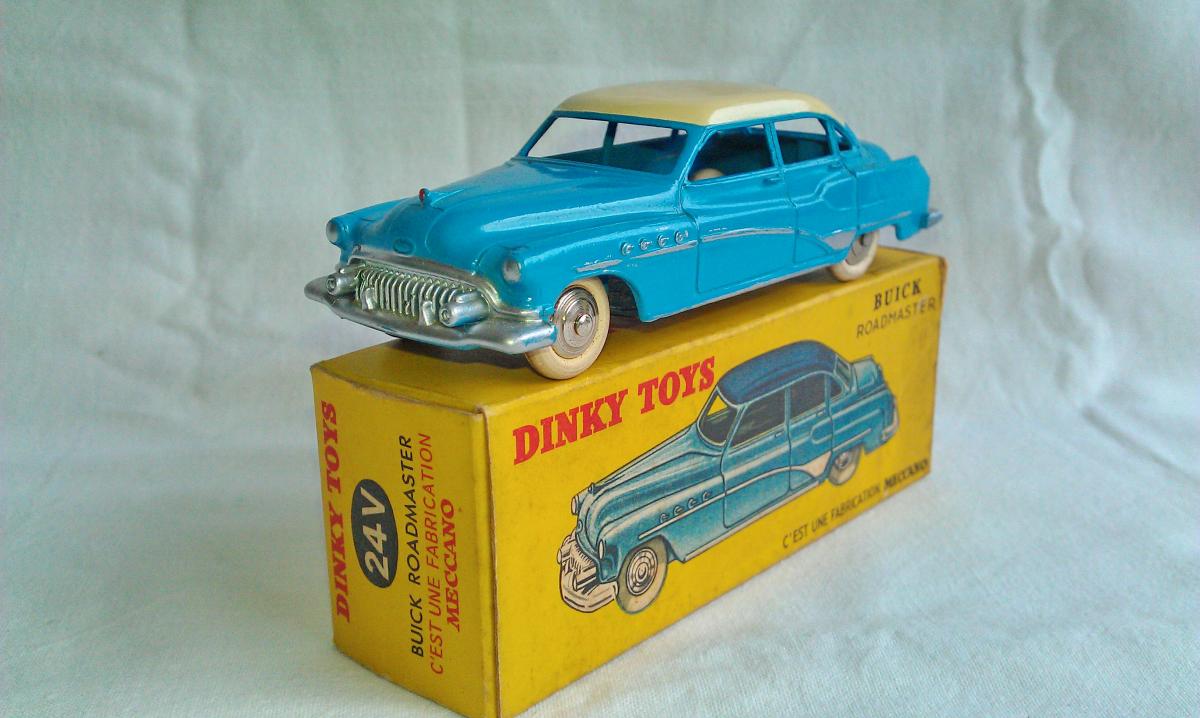
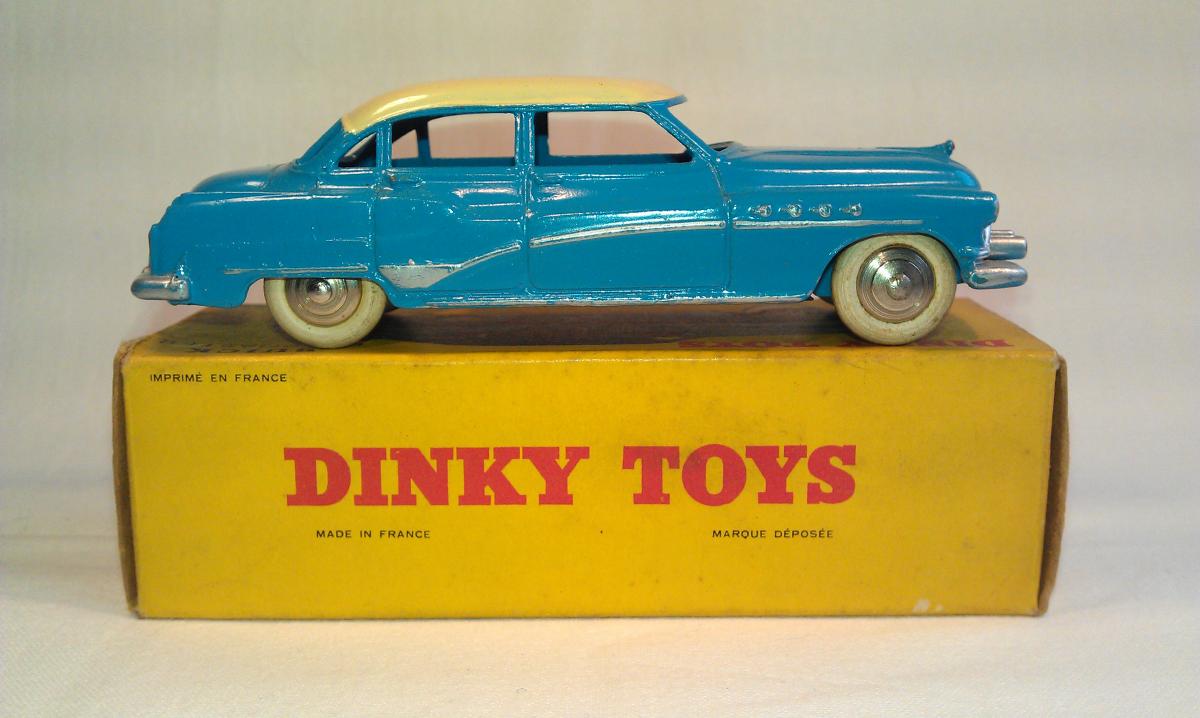
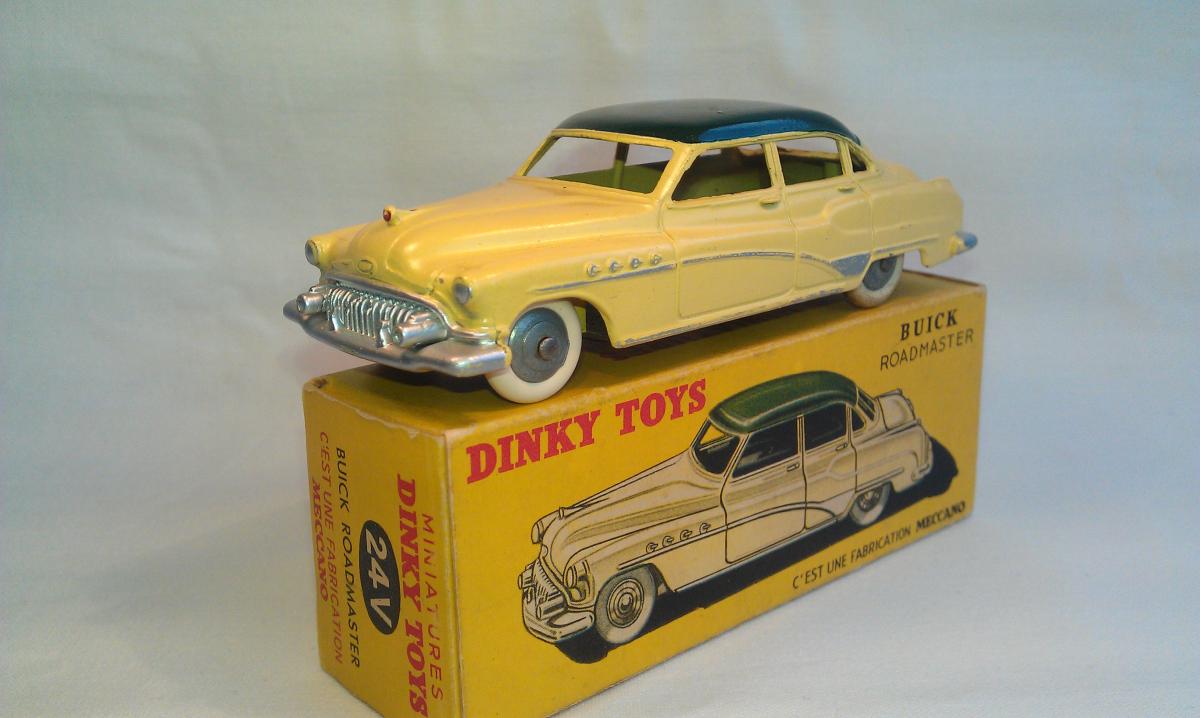
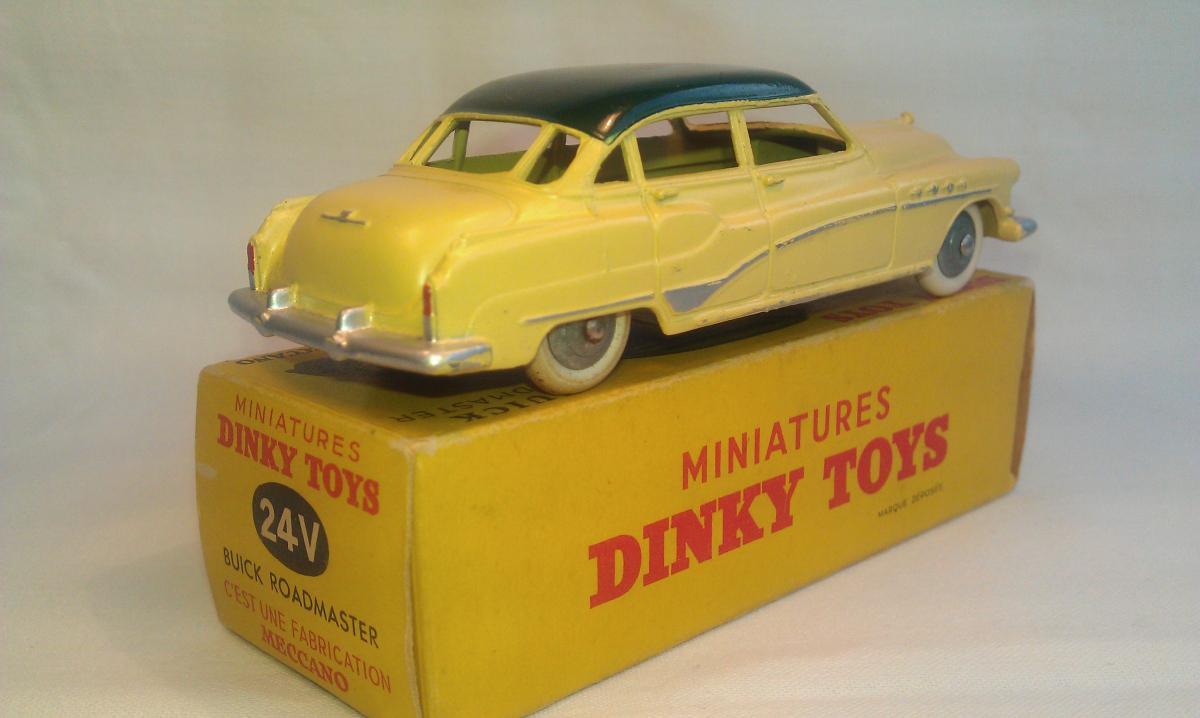
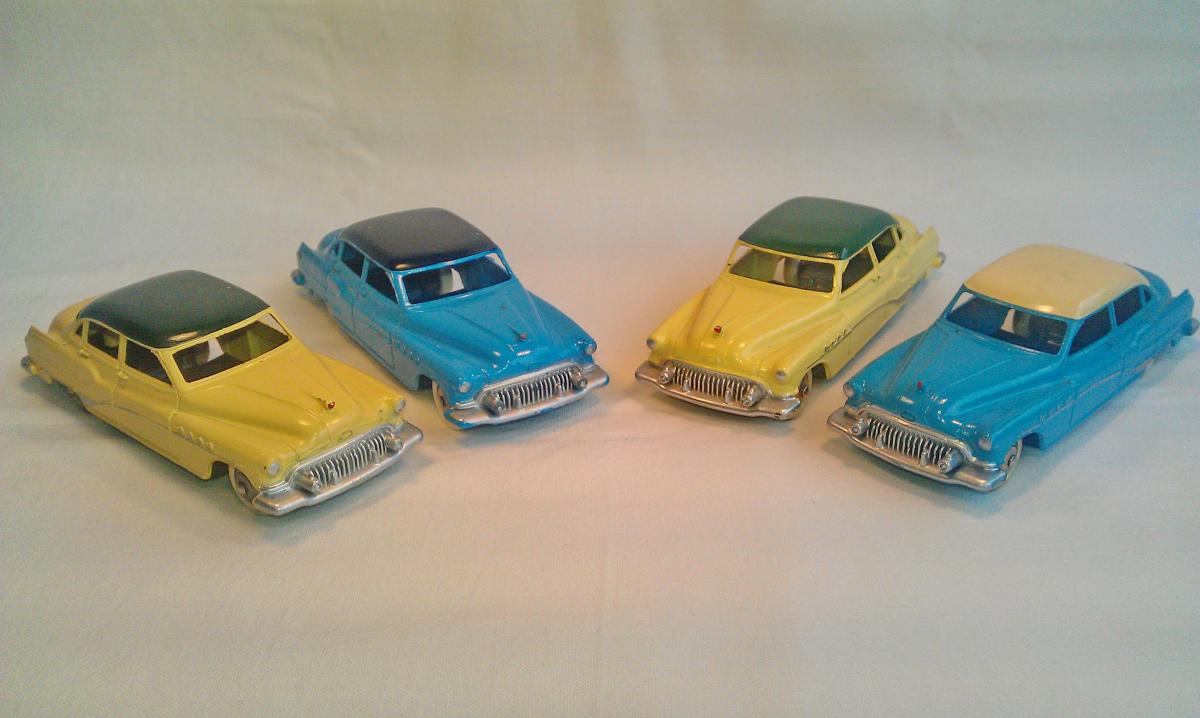
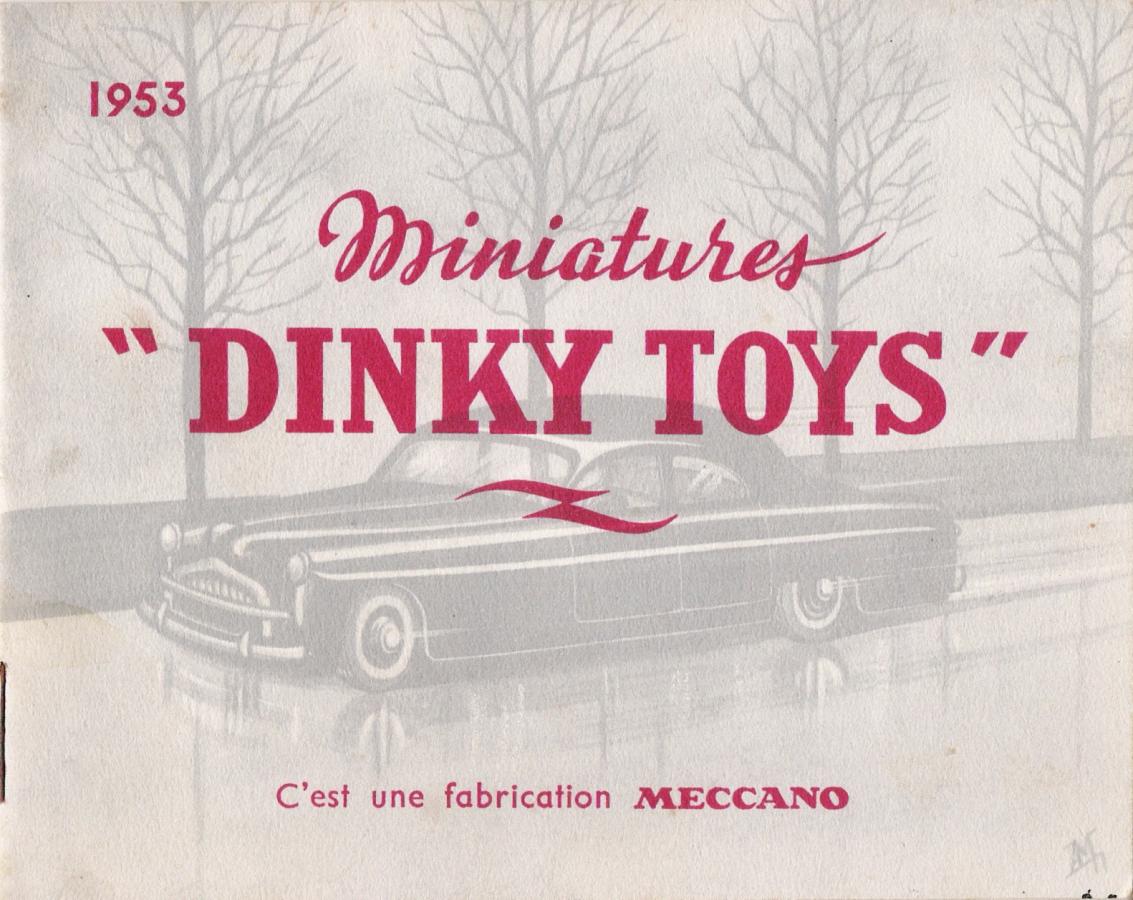
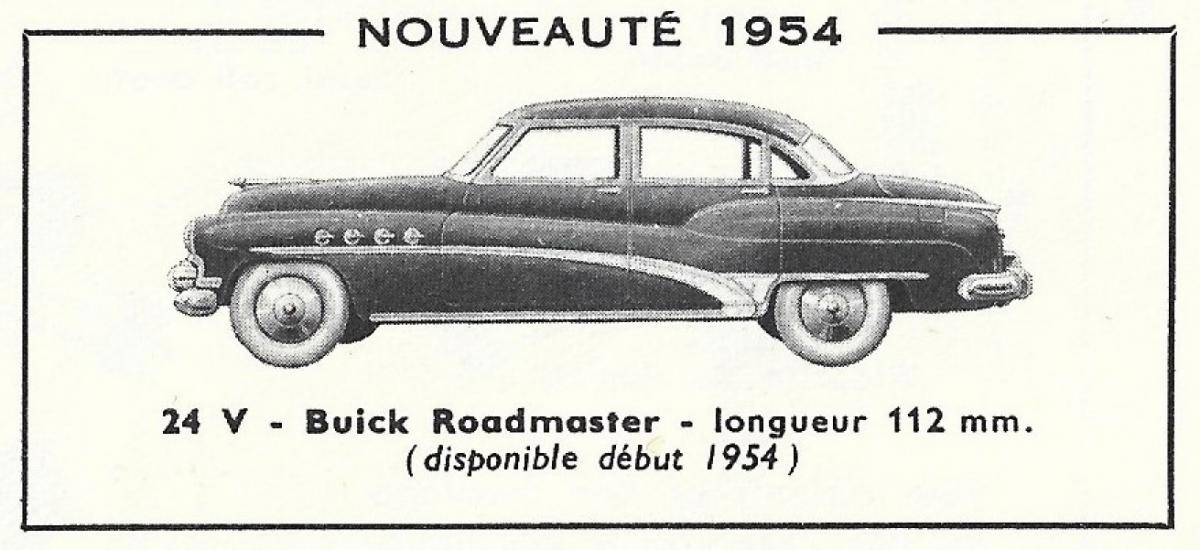
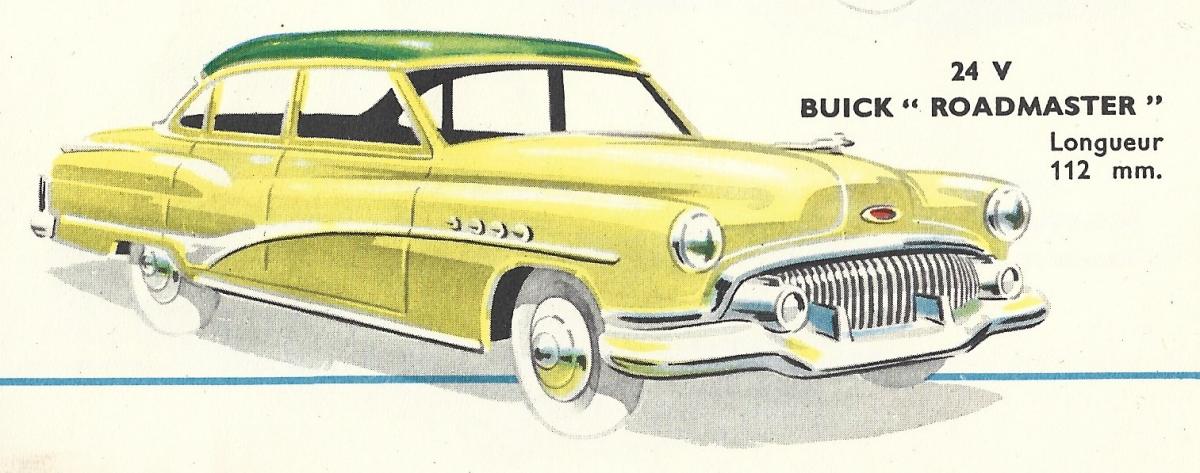
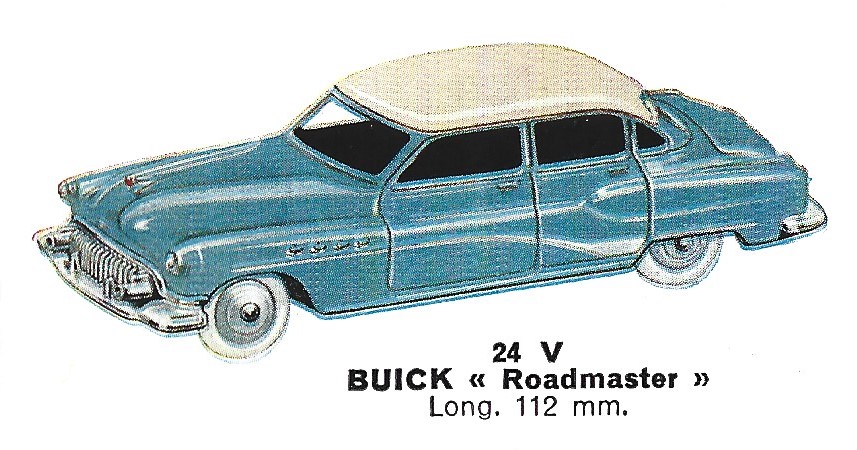
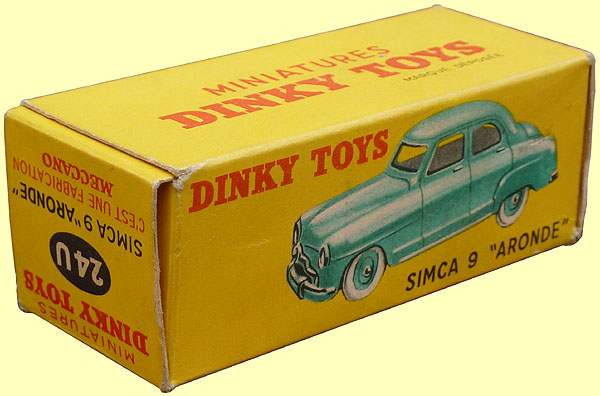
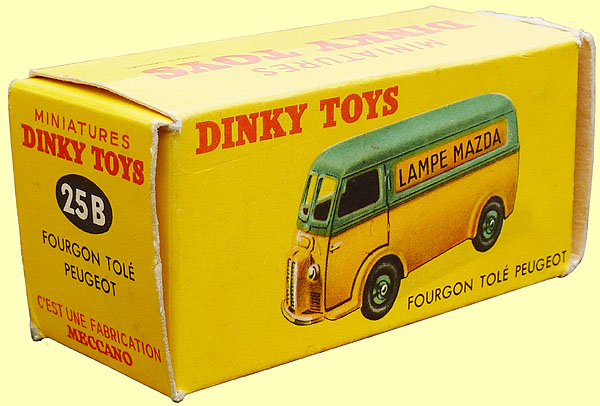
-105c and 383 4-Wheel Hand Truck (1949-1958)
-105c and 383 4-Wheel Hand Truck (1949-1958)
DTCAwebsite upgrade 2023
DTCAwebsite upgrade 2023
DTCAwebsite upgrade 2023
DTCAwebsite upgrade 2023
DTCAwebsite upgrade 2023
DTCAwebsite upgrade 2023
DTCAwebsite upgrade 2023
DTCAwebsite upgrade 2023
DTCAwebsite upgrade 2023
DTCAwebsite upgrade 2023
DTCAwebsite upgrade 2023
DTCAwebsite upgrade 2023
DTCAwebsite upgrade 2023
--22c Motor Truck (1933-50)
--22c Motor Truck (1933-50)
DTCAwebsite upgrade 2023
DTCAwebsite upgrade 2023
Trailer Caravans
Trailer Caravans
DTCAwebsite upgrade 2023
DTCAwebsite upgrade 2023
DTCAwebsite upgrade 2023
DTCAwebsite upgrade 2023
Trailer Caravans
Trailer Caravans
-138 Hillman Imp (1963-73)
-537 Renault 16 TL
-189 Triumph Herald Saloon (1959-64)
-255 Mersey Tunnel Police Van (1955-61)
DTCAwebsite upgrade 2023
-189 Triumph Herald Saloon (1959-64)
-189 Triumph Herald Saloon (1959-64)
-674 Austin Champ (1954-71)